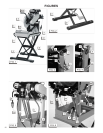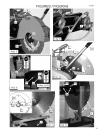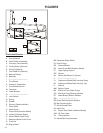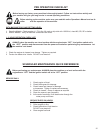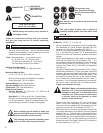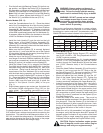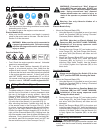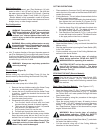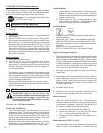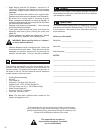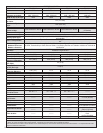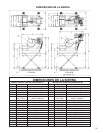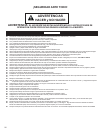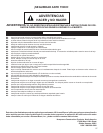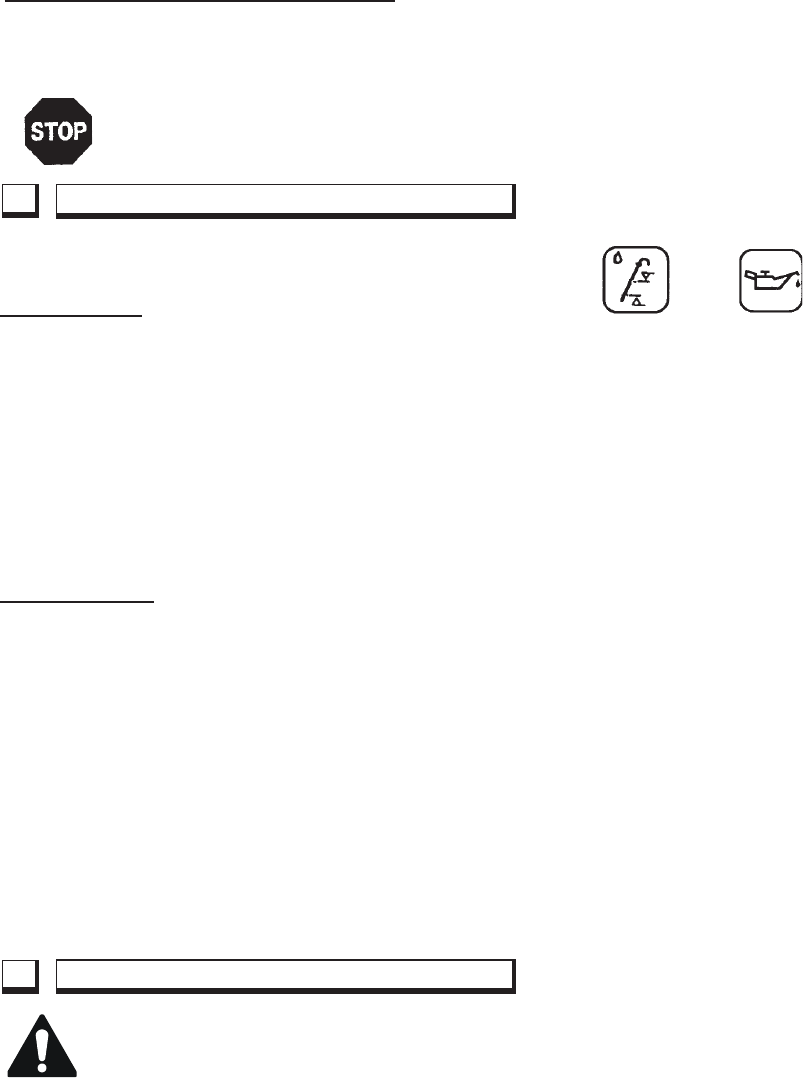
20
WAR NI NG: Bef or e pe rf ormi ng an y
maintenance, ALWAYS locate the machine on a
level surface with the engine / motor OFF, and
the start switch in the OFF position, or power
source disconnected.
After each use: CLEAN the machine.
Check Daily (All Models):
• Clean the reservoir pan [Pan Weldment (A)] to remove
sludge and slurry. This concrete slurry is an abrasive
cutting compound and will shorten the life of the Water
Pump (U) and the Diamond Blade (DD). Clean the
reservoir pan twice a day in heavy cutting. Then rell
the water reservoir pan with clean water.
• At the end of each day clean the water reservoir pan [Pan
Weldment (A) ] to remove sludge from the saw. Flush
clean water through the Water Pump (U) and hoses.
Gasoline Model:
1. Check engine air cleaner daily! If cutting dry check
engine air cleaner every four hours! Clean or
replace air cleaner element as recommended by the
engine manufacturer.
2. Check engine oil daily. Change engine oil after
every 50 hours of operation. See engine operation
manual for proper care and maintenance.
Gasoline Model:
• Change Engine Oil: Change engine oil after every 50
hours of operation.
• Engine Oil Type: Under normal operating conditions
use SAE 10W30 API service classication SF or SG.
See engine operation manual for other recommended
oil types.
• Engine Oil Capacity (Honda GX160)
0.63 U.S. Quarts, 0.6 Liters, 0.63 Imperial Quarts
Engine Oil Change Procedure:
1. Drain the oil while the engine is still warm to assure rapid
and complete oil drain. Pivot the Head Platform (B) so
that the blade is in the lowered position. Place a bucket
in the Pan Weldment (A) under the Oil Drain Hose (WW)
to catch the used oil. Remove the oil drain plug on the
end of the Oil Drain Hose (WW) [Fig. 1] and wait for all
of the used oil to be drained for the engine.
2. Re-install and securely tighten the plug in the Oil Drain
Hose (WW).
3. Re-ll engine with the recommended oil type. See the
engine operation manual for the oil ll location and
proper oil level. Note that the required oil capacity will
be larger because of the volume of oil contained in the
Oil Drain Hose (WW).
4. Re-install the oil ll cap.
5. Dispose of the used oil in a proper container and in a
manner that is compatible with the environment.
When Required:
• “Sta-Level” Blade Guard (Fig. 10): If the blade guard
becomes loose and pivots too freely the blade guard
rotation can be tightened. Adjust the Top Wheel (X) of
the three (3) wheels behind the blade guard:
1. Loosen the nut holding the Top Wheel (X).
2. Adjust the Setscrew (Y) to force the Top Wheel
(X) down against the Track Bar (Z).
3. Re-tighten the nut holding the Top Wheel (X) in
position.
Blade Alignment (FIGS. 11 & 12):
• The blade shaft arbor on this machine is aligned at the
factory so that a new blade will cut “square” with the
STOPPING THE UNIT (Gasoline Models):
Normal Operation: Stop the unit by following the procedure
in the engine operation manual. Wait for all blade movement
to stop before removing material from the machine.
Emergency: Turn the Engine Stop Switch (VV)
to the OFF position (Fig. 7).
• If the engine or motor stops during sawing, check the
following:
Electric Model:
1. Interruption to electrical connection: Check all electrical
connections.
2.
Manual Overload switch has been tripped: Single phase,
60 Hertz motors are equipped with a manual overload Reset
Button (PP) (Fig. 5). If the motor stops because of an electrical
overload and the overload Reset Button (PP) trips, turn the
motor Power Switch (RR) to the OFF position (Fig. 9). Allow
the motor to cool for 5 to 10 minutes, then push the Reset
Button (PP). A click indicates that the motor is reset and ready
for operation. Restart the motor by turning the Power Switch
(RR) to the ON position.
Gasoline Model:
1. Out of fuel: Check fuel level.
2. Low Oil Level: This unit is equipped with a shut
down system that stops the engine if a low oil level is
encountered. Check the engine oil level with the Head
Platform Assembly (B) pivoted so that the engine is in
a horizontal position.
• If the engine, motor or blade stalls for any reason, raise
the blade completely out of the cut, inspect the machine
thoroughly before restarting. When lowering the blade
into a partial cut, align the blade exactly with the cut to
prevent damage to the blade.
• Excessively fast cutting will stall the engine or motor.
• If the blade stops during sawing check that the drive belt
tension is adequate.
7 Maintenance
6 Incidents During Operation



